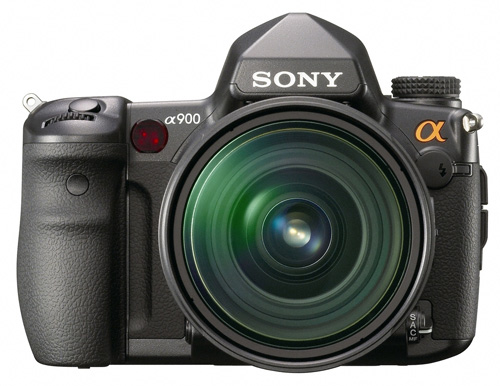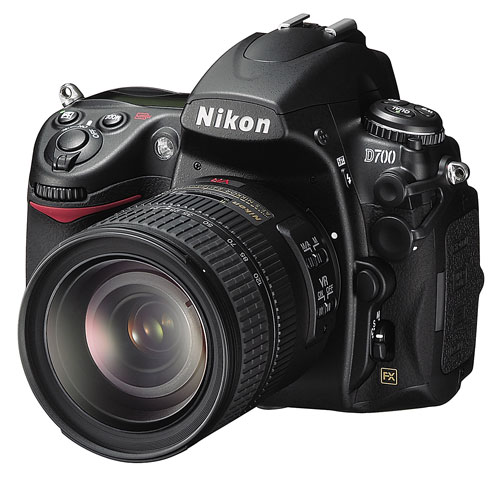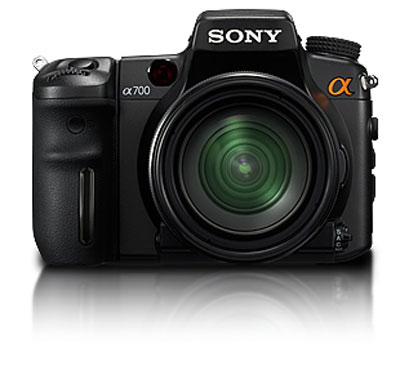Sony A900: A Closer Look at 24.6MP Resolution and Noise
by Wesley Fink on October 27, 2008 2:00 AM EST- Posted in
- Digital Camera
When we published the Sony A900 Full-Frame: Hands-On Preview several weeks ago, the excitement about the world's highest resolution full-frame DSLR was evident in every photography forum you could find on the web. It was not as if the new Sony flagship model was a surprise, because the specifications had been detailed in broad strokes in the year since Sony announced the development of a 24.6MP 24x36mm full-frame sensor. The launch just filled in the blanks with details and answered questions like whether Sony could get their body Image Stabilization to work on a full-frame. The answer was yes they could.
Just as quickly everyone began wondering whether that huge 24.6MP sensor would be any good at low-light high ISO photography, which had risen to the full-frame forefront with the Nikon D3 and D700. The Nikon's are half the 24.6 MP resolution, but with a standard range to ISO 6400 and extensions to a staggering 25600. Everyone wondered whether the Sony A900 could compete with Nikon's full-frame, designed for "available darkness" as some liked to tease.

Fortunately, it was not a long wait until we could buy a Sony A900, and with a production model in hand some of the questions can begin to be explored. It has already been clearly established in every review that the Sony A900 is the highest resolution full-frame that you can buy - even out-resolving the $8000 Canon 1DS Mark III with a 21.6MP sensor. That resolution performance is amazing when you consider the 24.6MP Sony A900 is just $3000, and it gives studio photographers a new choice - since they normally work in the A900 sweet range, which is broadly acknowledged to be ISO 100-800.

What is not as clear is how suitable the Sony A900 is for action photographers. The A900 features dual Sony BIONZ processors and it features a real 5 FPS speed, which most consider remarkably fast for a full-frame DSLR with 24.6MP resolution. The A900 also features the first body-integrated IS system in a full-frame camera. Sony SteadyShot is said to be capable of improving hand-held shooting by 2 to 4 stops depending on the lens. Most important is that SteadyShot is available and works with any lens that you mount on the Sony A900. This is particularly important in very large aperture lenses, which are often prohibitively expensive for optical OS since such huge elements have to be compensated.
With 5 FPS burst speed and always available IS, the A900 on the surface appears a good choice for action and sports. However, a sensor that is too noisy at high ISO could limit the usefulness of the A900 in action shooting.


That is the reason for these tests - to look more closely at noise of the A900 sensor. Noise will be compared to the Nikon D700 and Canon 5D, which are the only full-frame DSLRs you can currently buy other than the A900. Canon has announced the 5D Mark II but that camera is not yet shipping and is not expected in the market until late November.

With the announcement of the A900 Sony also announced an update to firmware Version 4 for the 12.3MP Sony A700 that incorporates all they learned in developing the A900. Our final noise comparison will be the Sony A700 to the full-frame A900.










45 Comments
View All Comments
CEO Ballmer - Monday, October 27, 2008 - link
These things are very nice, but the ZuneCam will prove they are waaaaay over-priced!http://fakesteveballmer.blogspot.com">http://fakesteveballmer.blogspot.com
strikeback03 - Monday, October 27, 2008 - link
I'm guessing default settings in JPEG. Which is a valid baseline, but given different manufacturers different philosophies on JPEG processing, makes commenting on apparent sharpness of the image somewhat difficult. Also, was any form of dynamic range expansion turned on? I'm surprised at how much color noise is already appearing in the A900 shots at ISO 400, wonder if it is a result of boosting some shadows?As you guys are buying your test bodies, I can understand not having a 1DIII, but making statements such as "At Lower ISOs, 100-400, nothing on the market comes close to the Sony." seems a bit odd without at least trying it against a body with 86% of the pixel count. And obviously if those in the market have the means to get a medium-format back and associated gear, you are far beyond the capabilities of the A900.
Wesley Fink - Monday, October 27, 2008 - link
Yes, default settings were used in all parameters, including dynamic range expansion. We tried to be careful to say compared to others in its class, which is obviously full-frame 35mm-size sensors. We have not compared any of the full-frame cameras to medium forma or anything like the new Leica medium format that uses the Kodak sensor, nor do we plan to.As for comparisons to the 1Ds Mark III, the comments were based on conversations we had with Pros who have shot both the Sony A900 and the Canon 1Ds III. We also looked at images shared with us by a couple of them. We would be more comfortable with our own hands-on with the $8000 1Ds III but that will be a moot point once we have the 5D Mark II. Canon claims the 5D II sensor, with the same resolution, is superior to the 1Ds III so we will soon get our first hand look.
melgross - Monday, October 27, 2008 - link
Some odd conclusions both here and DPR.One thing that stands out here though, is the strange notion that with all the noise, the higher resolution is of any use.
I don't know of anyone who wouldn't control noise with noise reduction once it reaches the levels of the a900 at ISO 800. Even 400 isn't great, just ok.
Once that is done, the higher resolution will be no better than anywhere else. The more noise, the more noise reduction, the less detail.
It would have been more interesting if noise reduction was applied to see the effects of bringing it in line with the other cameras. Where would the detail have gone?
In addition, if noise is so high at higher ISO's, as it is, making smaller prints so as to not see it, would also mean making smaller prints than would allow you to see the higher resolution as well. No gain, no pain.
I also find it interesting that field reports about this camera from both DPR and the Luminous Landscape have agreed that real-world pictures show less detail that the Canon 1Ds mkIII. The high detail is smeared because of the non removable noise reduction done before the A/D converter (as opposed to the noise reduction that can be turned off after the A/D converter.
The subject used for the comparisons is also pretty bad. I'm sure something more suitable that that could be found.
JarredWalton - Monday, October 27, 2008 - link
I shoot plenty of objects at ISO 100-400, sometimes using a tripod. In such cases, the differences between 12MP and 26MP will definitely be apparent. That said, I don't do print work and will just end up cropping and resizing down to a manageable resolution. Still, for details of a motherboard as an example, that increased resolution could be very handy.As for the subject matter of the ISO comparisons, I'm of the opinion that as long as it's static (i.e. the same in each review) it serves its purpose. We've all seen the various chart photographs (which are widely available elsewhere), but I suppose Wes can reproduce those if necessary. I just don't see how it makes much of a difference one way or the other; the sample images at the end do a good job of showing other possibilities with the camera, and personally I think some of the images look very nice indeed. Just stay away from ISO 800 or higher if possible.
strikeback03 - Monday, October 27, 2008 - link
My complaint with the ISO image subject is a lack of anything to help differentiate between good NR software and a low-noise sensor. With a test image composed almost entirely of smooth single-color areas, good NR software could make those pretty smooth while maintaining the borders between colors. A subject with more detail makes it harder to just blur noise away without seeing the results in detail captured.haplo602 - Monday, October 27, 2008 - link
and on a color checker chart you can evaluate sensor performance in high ISO for colo/saturation drifts ... this cannot be seen on the current simple 3 color test target ...LTG - Monday, October 27, 2008 - link
This review kept reminding me of the DPReview.com review of the same camera.It's definitely different works, but the emphasized points are very similar like choosing to commend sony for lack of gadgetry.
I guess that fine we all build thoughts from some starting point - but I'll eat my left shoe if the author didn't read the dpreview article before writing this.
yyrkoon - Monday, October 27, 2008 - link
You know, you could have just as easily not left a comment at all.No one really cares what your thoughts are on web plagiarism . . .
Wesley Fink - Monday, October 27, 2008 - link
Plese read my Sony A900 Preview where I praise the same points long before dpreview published their review of the Sony A900. We all read other reviews but I have no problem reaching my own conclusions.